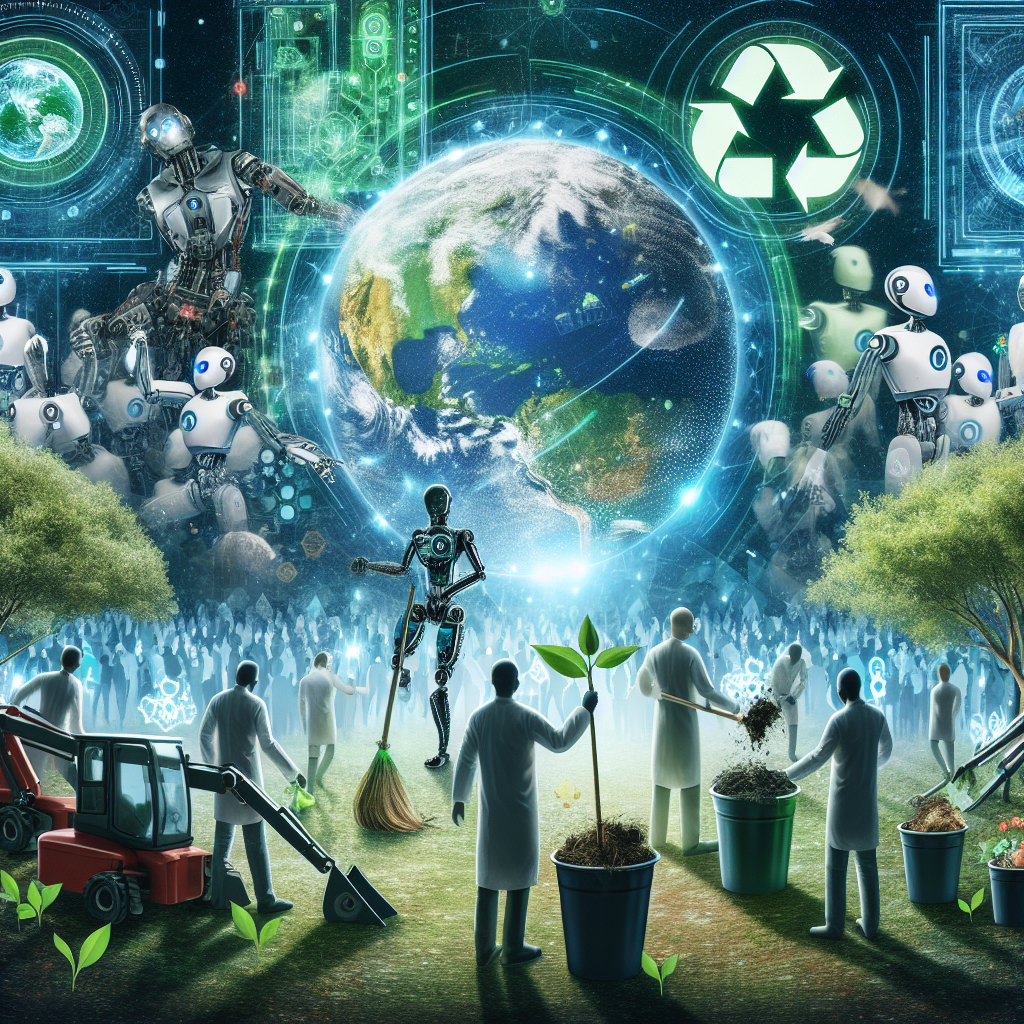Artificial General Intelligence (AGI) is a rapidly evolving field of technology that has the potential to revolutionize our world in many ways. One of the most pressing issues facing humanity today is the state of the environment, with climate change, deforestation, pollution, and other environmental problems threatening the health and well-being of our planet. Can AGI help to save the planet? In this article, we will explore the ways in which AI technology can be used to address environmental challenges and create a more sustainable future for all.
AGI and Environmental Monitoring
One of the most promising applications of AGI in the environmental sector is in the area of monitoring and data analysis. AGI systems have the ability to process vast amounts of data from sensors, satellites, and other sources to provide real-time information on environmental conditions. This data can be used to track changes in the climate, monitor the health of ecosystems, and identify areas that are at risk of environmental degradation.
For example, AGI systems can be used to analyze satellite imagery to track deforestation rates, monitor changes in sea levels, and identify areas that are at risk of wildfires. By using AI technology to collect and analyze this data, scientists and policymakers can make more informed decisions about how to protect the environment and mitigate the effects of climate change.
AGI and Climate Change
Climate change is one of the most urgent environmental challenges facing our planet today. AGI technology can play a crucial role in helping to address this issue by providing insights into the causes and effects of climate change, as well as suggesting potential solutions.
For example, AGI systems can be used to analyze climate models to predict future changes in the climate, identify regions that are most at risk of extreme weather events, and develop strategies for reducing greenhouse gas emissions. By using AI technology to simulate different scenarios and test potential solutions, scientists and policymakers can better understand the complex dynamics of climate change and develop more effective strategies for mitigating its effects.
AGI and Environmental Conservation
Another important application of AGI technology in the environmental sector is in the area of conservation. AGI systems can be used to analyze data on endangered species, track poaching activities, and develop strategies for protecting biodiversity.
For example, AGI systems can be used to analyze camera trap images to identify and track individual animals, monitor changes in wildlife populations, and predict the impact of human activities on ecosystems. By using AI technology to collect and analyze this data, conservationists can develop more effective strategies for protecting endangered species and preserving biodiversity.
AGI and Sustainable Development
Sustainable development is a key goal for many countries around the world, as they seek to balance economic growth with environmental protection. AGI technology can play a crucial role in helping to achieve this goal by providing insights into how to develop in a more sustainable way.
For example, AGI systems can be used to analyze data on energy consumption, water usage, and waste production to identify opportunities for reducing environmental impact and increasing resource efficiency. By using AI technology to analyze these data, policymakers and businesses can develop more sustainable practices and reduce their environmental footprint.
FAQs
Q: Can AGI technology really save the planet?
A: While AGI technology alone cannot solve all of the world’s environmental problems, it has the potential to play a crucial role in addressing key challenges such as climate change, deforestation, and biodiversity loss. By using AI technology to collect and analyze data, scientists and policymakers can make more informed decisions about how to protect the environment and create a more sustainable future for all.
Q: Are there any risks associated with using AGI technology in the environmental sector?
A: Like any technology, AGI technology comes with potential risks and challenges. These include ethical concerns about the use of AI in decision-making, the potential for bias in data analysis, and the risk of unintended consequences from AI systems. It is important for policymakers and researchers to carefully consider these risks and develop strategies for mitigating them.
Q: How can individuals contribute to environmental protection using AGI technology?
A: While AGI technology is often used by scientists and policymakers to address large-scale environmental challenges, individuals can also contribute to environmental protection using AI technology. For example, there are apps and tools that use AI to help individuals reduce their carbon footprint, track their energy usage, and make more sustainable choices in their daily lives.
In conclusion, AGI technology has the potential to play a crucial role in addressing key environmental challenges and creating a more sustainable future for all. By using AI technology to collect and analyze data, researchers and policymakers can make more informed decisions about how to protect the environment and mitigate the effects of climate change. While there are risks and challenges associated with using AGI technology, with careful planning and consideration, AI technology can be a powerful tool for saving the planet.

